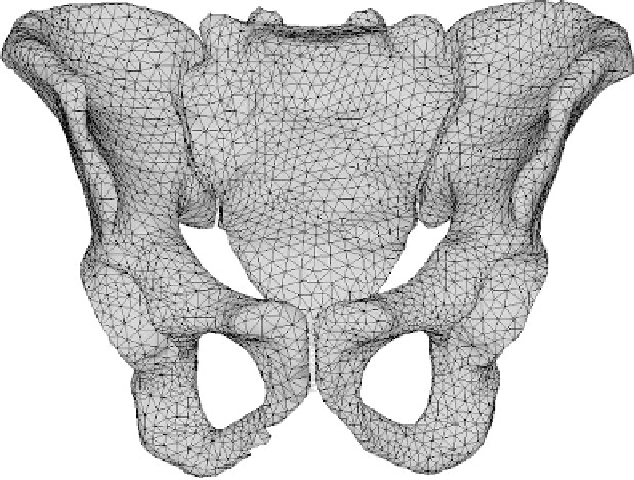Biomedical Engineering Reference
In-Depth Information
FIgure 11.5
Finite element model of the intact pelvis.
ANSYS 12.0.1
NODAL SOLUTION
STEP = 1
SUB = 1
TIME = 1
SEQV (AVG)
Powergraphics
EFACET = 1
AV RES = Mat
DMX = .172E-03
SMN = 6247
SMX = .584E+07
6247
654149
.130E+07
.195E+07
.260E+07
318.203
690492
.138E
+
07
.207E
+
07
.276E
+
07
.345E
+
07
.414E
+
07
.483E
+
07
.552E
+
07
.621E
+
07
.325E+07
.389E+07
.454E+07
.519E+07
.584E+07
(a)
(b)
FIgure 11.6
(See color insert.)
The von Mises stress distribution of the intact model: (a) global model;
(b) the left ilium.
11.3.2 f
inite
e
lement
m
odel
V
alidation
As shown in Table 11.1, there have been numerous recent publications on FE models of the pelvis,
but only a few of them were experimentally validated. Model validation is extremely necessary in
biomechanical research for gauging the accuracy of predictions. There are several methods for vali-
dating an FE model, such as in vivo and in vitro experiments and model-model validation (using a
validated model to validate another new model).



Search WWH ::

Custom Search